How To Clean Up A Scanned Drawing In Gimp
You accept a sketch that you're proud of and want to bear witness off, or maybe even sell. Unfortunately, all you lot have to capture it is a crappy camera and the lights in your living room. This volition evidence you how to become a great image out of it anyways.
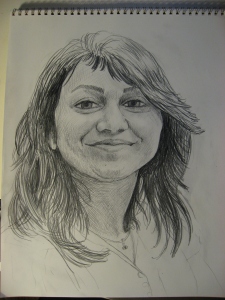 Lighting is tricky when photographing a drawing. Graphite has a natural shine, and then flash isn't an option. Neither is pointing a light straight at the drawing. Your all-time bet is to position several lights around the image at shallow angles. The glare of the lines will be directed abroad from the photographic camera, but you lot will notwithstanding get a relatively even tone across the epitome. Worry more about eliminating glare than producing an even tone, because the tone is like shooting fish in a barrel to right for.
Lighting is tricky when photographing a drawing. Graphite has a natural shine, and then flash isn't an option. Neither is pointing a light straight at the drawing. Your all-time bet is to position several lights around the image at shallow angles. The glare of the lines will be directed abroad from the photographic camera, but you lot will notwithstanding get a relatively even tone across the epitome. Worry more about eliminating glare than producing an even tone, because the tone is like shooting fish in a barrel to right for.
The image I've picked to piece of work with has a lot of issues. The paper isn't evenly lit, and the lights shining on information technology take different temperatures. It was taken with a tiny betoken-and-shoot camera. Nevertheless, with simply a few steps, we'll get a workable image out of it. Our strategy is to produce an image that contains only the tone of the paper using a few filters for shortcuts, and little elbow grease. Then, we'll employ layer modes to remove the effect of the paper tone from the image.
First, find the darkest region of bare paper on the prototype, and use the eyedropper to get its color. Remember the boilerplate value of the three color channels. In this image, the darkest bare paper has a value of nearly 110. We're going to employ this value to try to remove all of the lines from the prototype.
Duplicate the paradigm on a new layer. And then open runFilters > Enhance > Despeckle using the following settings. Plow off "Adaptive." Plow off "Recursive." Set the radius as high as it will get. Set Black level to the value of the darkest bare paper (in this case 110), and White level to 256.
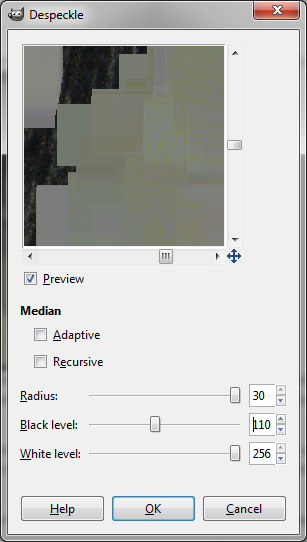
What we're doing hither is asking Gimp to look at every 30×xxx region, and find the median of all the pixels that are brighter than 110 and dimmer than 256. Since we determined that the dimmest area of bare paper is 110, by specifying this range we are getting the full range of the paper tone, but every bit little as possible of the lines in the drawing, and hopefully, getting just the color of the newspaper out of the filter over almost of the image.
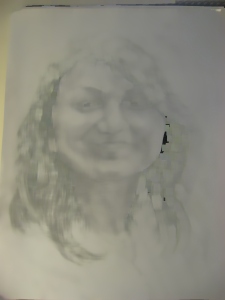 Information technology worked for some of the paradigm, merely not all of information technology. In some regions of the hair you can run into that in that location weren't whatever pixels that met the range constraints of 110 to 256, so it left the paradigm lonely. You can nevertheless see the shadow of the original drawing in areas that were particularly nighttime. We tin get a little further past running it again.
Information technology worked for some of the paradigm, merely not all of information technology. In some regions of the hair you can run into that in that location weren't whatever pixels that met the range constraints of 110 to 256, so it left the paradigm lonely. You can nevertheless see the shadow of the original drawing in areas that were particularly nighttime. We tin get a little further past running it again.
 From here nosotros accept to clean upwardly manually. I exercise this using the smudge tool and paintbrush to pull the colour in from the regions I trust into the regions that take been tainted by the drawing. I recommend duplicating the layer before doing this.
From here nosotros accept to clean upwardly manually. I exercise this using the smudge tool and paintbrush to pull the colour in from the regions I trust into the regions that take been tainted by the drawing. I recommend duplicating the layer before doing this.
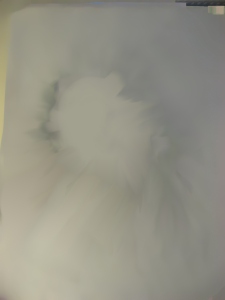
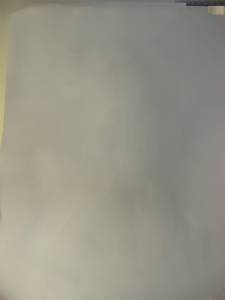 This final image should be our all-time estimate at what the paper would look like without a drawing. Keep referring to the original drawing as you tweak it. In one case you're satisfied that it looks like a blank version of the original drawing, set the fashion of the layer to "Split up."
This final image should be our all-time estimate at what the paper would look like without a drawing. Keep referring to the original drawing as you tweak it. In one case you're satisfied that it looks like a blank version of the original drawing, set the fashion of the layer to "Split up."

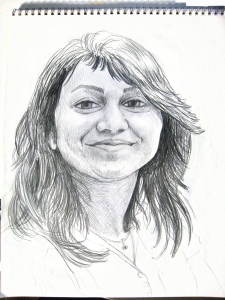 Voilà! The paper disappears!
Voilà! The paper disappears!
Why does this work? Physics tells united states that the colour of the light multiplies with the colour of the surface (the albedo) to produce the color that we see. The areas of blank paper bear witness us the color of the light since the paper itself is white. To recover the original drawing, all we have to do is invert that multiplication (divide) to recover the color of the surface. Later on a removing any remaining hue and cropping, we've got an image we tin can work with.
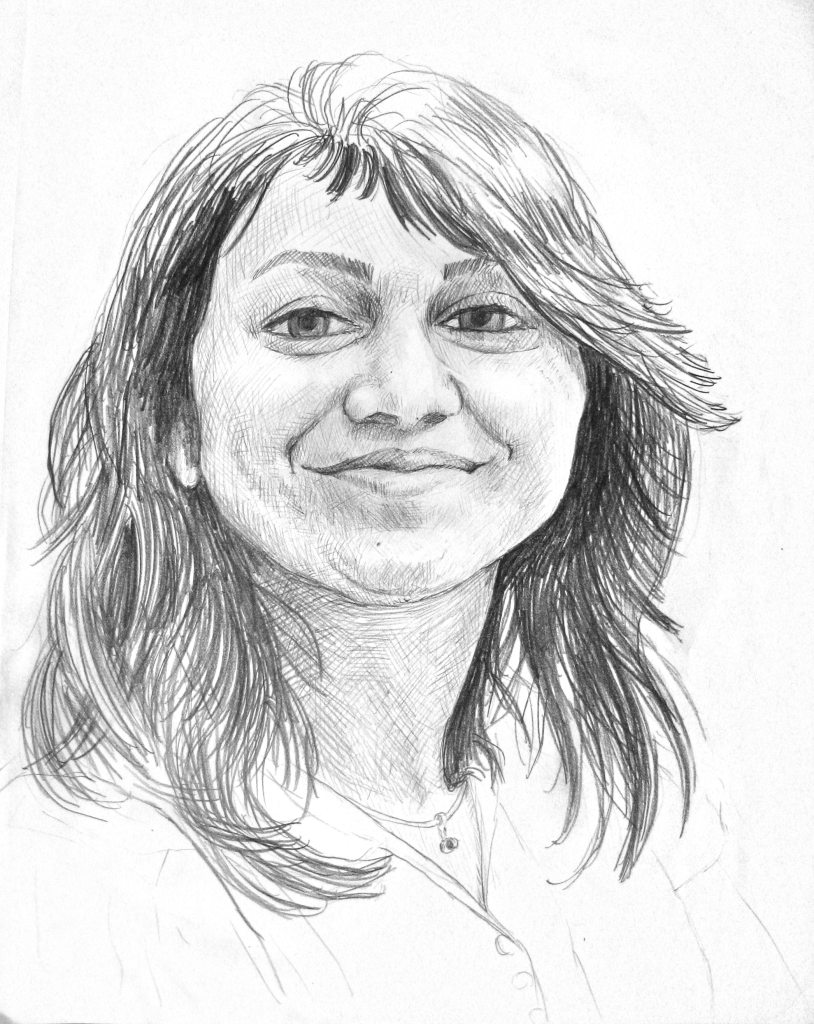
Source: https://moultano.wordpress.com/2013/11/03/how-to-quickly-clean-up-a-drawing-using-gimp-and-physics/
Posted by: adamsmeman1981.blogspot.com


0 Response to "How To Clean Up A Scanned Drawing In Gimp"
Post a Comment